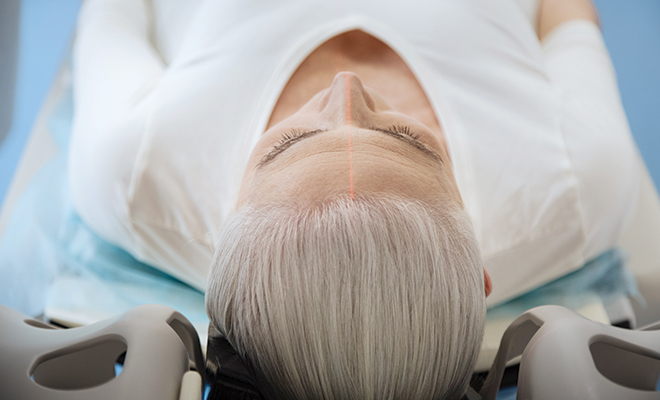
Is an MRI Needed for a Diagnosis of Dementia?
Dementia. When expressed, that word carries significant weight. It is often incorrectly referred to as senility or senile dementia. In reality, dementia is not just a single disease. Like heart disease, it is an overall term and covers a vast range of medical conditions, including Alzheimer’s disease.
W hen grouped under the term of general dementia, these medical conditions are caused by abnormal changes in the brain. These changes can trigger a decline in thinking, or cognitive skills, and can greatly impair one’s ability to function independently. These disorders can also have a negative impact on feelings, behavior and relationships.
Symptoms of dementia can vary and may include issues with short-term memory; paying bills; planning meals; remembering appointments; and losing track of personal effects, such as a wallet or purse. Typically, many dementias progress slowly and gradually get worse. It is important to recognize any symptoms and seek professional evaluation to acquire the maximum benefit from any available treatments.
Diagnosing dementia is no easy task, as there is no single test to determine if someone has this form of disease. Instead, doctors rely on a careful medical history, a complete physical examination, a variety of laboratory tests, and the observation of changes in thinking, day-to-day function and behavioral changes in association with each type of dementia. While doctors can determine if a patient has a certain type of dementia with a high degree of certainty, it is much more challenging to designate the exact type of dementia, as the symptoms and changes in the brain of different dementias can overlap.
One diagnostic tool that has been used in the role of diagnosing dementia is the MRI, or magnetic resonance imaging, scan. This machine uses powerful magnets along with radio waves to construct detailed images of the brain and the tissue and nerves surrounding it. This type of scan is generally included in the standard evaluation for Alzheimer’s disease and other forms of dementia. An MRI will reveal the anatomic structure of the brain and can be used to rule out problems such as a tumor, stroke and hemorrhage, all of which mimic Alzheimer’s disease. An MRI can also indicate any loss of brain mass associated with Alzheimer’s and other forms of dementia. Again, however, the MRI is best used in conjunction with myriad analyses in the form of obtaining detailed changes in mental abilities, personality, mood and behavior of the patient, when those changes began, and how the patient continues to function.
The doctor will also consider whatever physical complaints or symptoms the patient has, which may include loss of coordination, changes in vision and weakness. An inquiry into medications the patient is taking, along with information as to the medical problems of family members, will also be taken into account. Yes, this may seem like a wealth of information to gather, but it is crucial to the diagnosis, especially when the physician orders the MRI as a final test for a patient who exhibits sudden mental changes and struggles with walking, These sudden changes can indicate excess cerebrospinal fluid around the brain, referred to as normal pressure hydrocephalus. Revealed through the MRI, this would allow for immediate treatment in order to avoid possible permanent damage to the brain.
Doctors may use MRIs to identify issues that can cause dementia, as well as the degeneration of the brain’s outer layer, which is common in many forms of dementia and may be visible on the brain scan. Under normal conditions, a person’s brain cortex appears wrinkled, presenting with ridges of tissue that are separated by valleys, also known as sulci. With some individuals who have cortical atrophy, those ridges can become thinner and the sulci may grow wider. As brain cells begin to die, the fluid-filled cavities in the center part of the brain will begin to expand to fill the available space. They will then appear much larger than normal. An MRI can identify changes in the structure of the brain and function that indicate or suggest Alzheimer’s disease. Through the use of magnetic fields and focused radio waves that detect hydrogen atoms in tissues throughout the body, an MRI can identify brain atrophy and damage caused by mini strokes or subtle ischemia.
Although dementia rarely follows the path to improvement, it is crucial to obtain an accurate diagnosis, as it determines the treatment path to undertake and also helps both patients and families understand what is in store for the future. As with any medical condition, your physician or health care provider should discuss with you the best diagnostic tools and treatment options suitable for your specific needs. Diagnosing illness or disease does not always rely on a one-size-fits-all approach. ■
Sources: helpguide.org, sciencedaily.com, alz.org, webmd.com and stanfordhealthcare.org.







